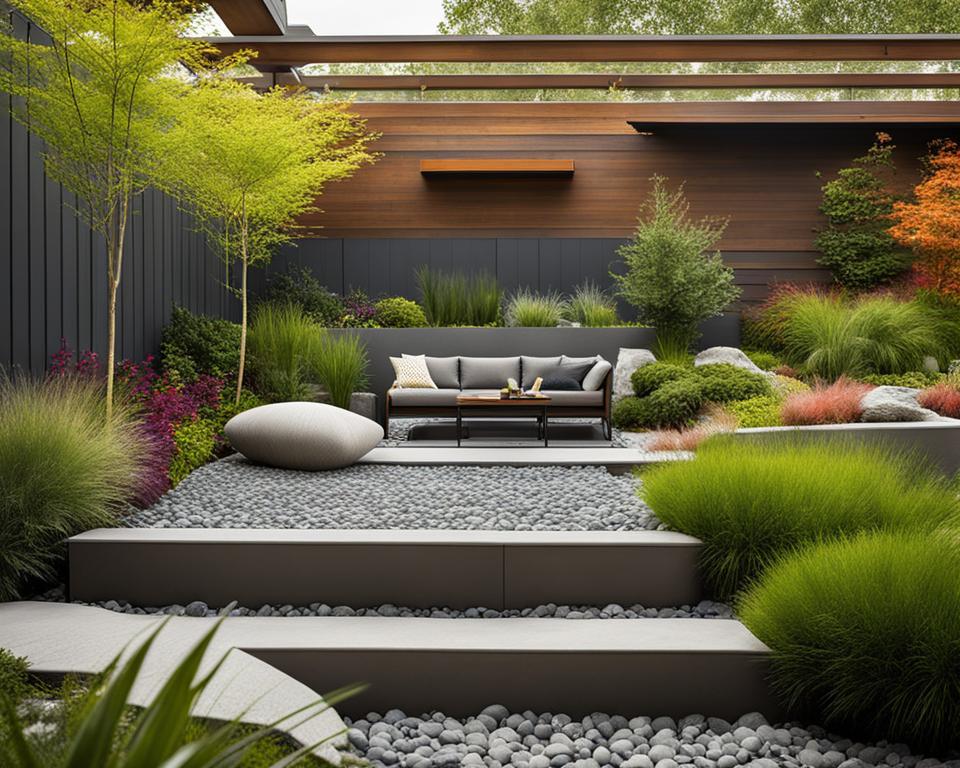Imagine stepping out into your personal slice of nature, a verdant haven amidst towering high-rises and bustling city streets. Urban gardening ideas are not just fantasies; they’re doable, satisfying projects that can turn even the smallest of spaces into a vibrant urban oasis. Whether you’re longing for a quiet retreat or a sustainable way to grow your own herbs and vegetables, small space gardening tips are your blueprint to a greener lifestyle right where you are.
With a touch of creativity and the right guidance, any urban dweller can design a lush, productive garden in areas previously overlooked. From potted plants adorning cozy balconies to rooftop vegetable patches offering sanctuary and nourishment, the possibilities of urban oasis design are endless. If your green thumb is twitching for action, dive into the world of urban gardening and witness the transformation of your concrete surroundings into a patch of paradise.
Key Takeaways
- Urban gardening is a feasible way to introduce tranquility and greenery to city living.
- Small spaces and unconventional areas can be maximized for garden potential.
- Implementing small space gardening tips can lead to the growth of both edible and ornamental plants.
- Design creativity is key to crafting a unique urban oasis in even the most compact of city spaces.
- From balconies to rooftops, a range of environments can support an urban garden oasis.
Creating Community Gardens in Urban Landscapes
Imagine transforming an empty lot into a vibrant hub of greenery and community engagement. With community garden design, urban gardening for beginners becomes an enriching experience that yields more than just edibles. It’s a proactive leap towards creating sustainable, shared spaces that benefit the entire community.
Benefits of Shared Garden Spaces
Community gardens hold the power to convert urban voids into sources of nutrition and joy. By participating in edible landscaping ideas, not only do you get to enjoy a fresh harvest, but you also contribute to improving local biodiversity and environmental health. Such shared spaces can create a significant positive impact on urban ecosystems and foster stronger community bonds.
Collaborating with Neighbors and Building Relationships
In the realm of community gardens, collaborative efforts lead to bountiful harvests and cherished relationships. Whether you are a seasoned gardener or new to the soil, there’s always something to learn and someone to teach. Through cooperation and shared responsibilities, strong community ties are forged, making urban living more personable and supportive.
Navigating Local Guidelines for Communal Gardens
Before you put spade to earth, it’s essential to understand the local regulations that surround communal gardening. From zoning laws to water usage, ensuring compliance will set the foundation for a thriving and trouble-free garden. Reach out to your city officials or local gardening clubs to get a good grasp on what’s needed to greenlight your community garden project.
| Consideration | Benefits | Challenges |
|---|---|---|
| Site Selection | Access to sunlight, water source, and communal engagement | Securing permits, land rights, and addressing potential contaminants |
| Design | Efficient use of space, pathways for access, areas for socializing | Designing for diverse needs, including accessibility features |
| Plant Choices | Opportunity for a wide variety of vegetables, flowers, and herbs | Picking plants suitable for local climate and urban soil conditions |
| Maintenance | Shared workload, community learning, and engagement | Organizing consistent work schedules and responsibilities |
Garden Oasis on the Rooftop: Sky-High Greenery
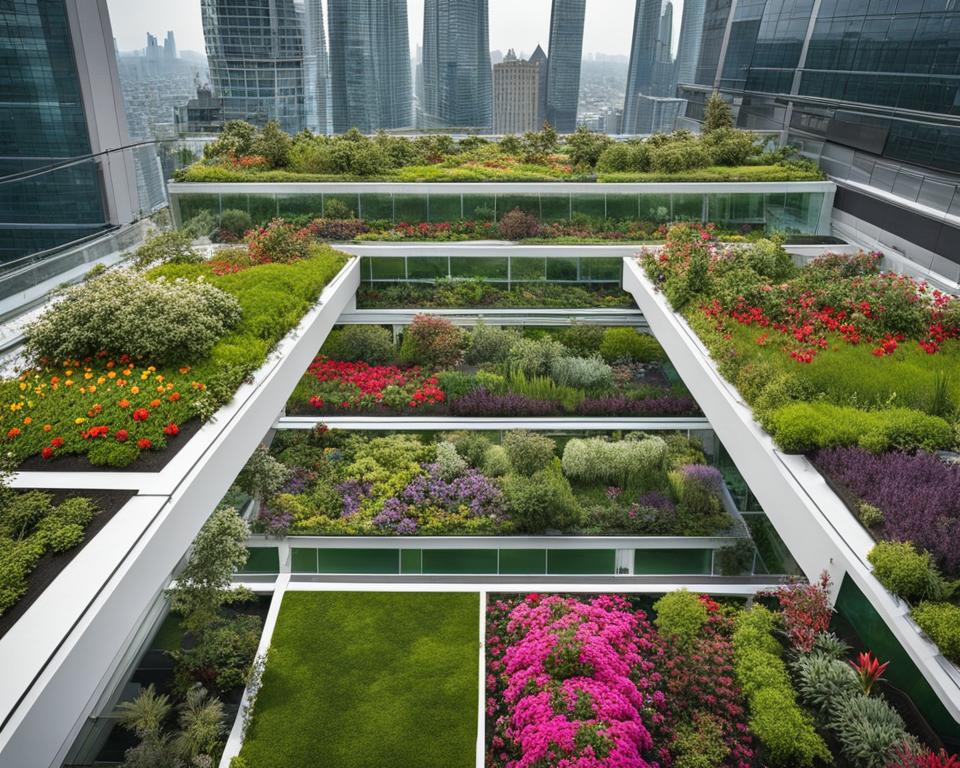
Rooftop gardens redefine the urban skyline, offering pockets of nature that turn your rooftop into a private sanctuary. Embrace these rooftop garden inspiration ideas, harnessing innovative small space gardening tips and urban gardening ideas, to transform your underutilized roof into a verdant retreat.
Before you plant your first seed or position your favorite fern, arm yourself with knowledge pertaining to your building’s construction and bylaws. Crafting a rooftop garden within the confines of building regulations is paramount, striking a balance between aesthetic bliss and structural integrity.
Lightweight Planting Solutions for Building Regulations
Engaging with property management to understand the do’s and don’ts of rooftop gardening is crucial. You’ll often find that weight is a critical factor. Opt for lightweight solutions—such as aluminum containers, fiberglass pots, or soil composed of peat and vermiculite—that keep your garden within limits without stifling your green dreams.
Dealing with Extreme Weather: Protecting Your Plants High Above
Rooftops face the brunt of mother nature’s temperament, from scorching heat to battering winds. A thoughtful approach to plant protection will pay dividends, ensuring that your carefully nurtured plants remain healthy and vibrant throughout the seasons.
Innovative Irrigation Systems for Rooftop Gardens
Adequate watering is a non-negotiable aspect of any thriving urban garden. Innovative irrigation solutions like drip systems or self-watering planters are essential for rooftop settings, where conventional watering methods might prove challenging.
| Feature | Benefits | Considerations |
|---|---|---|
| Lightweight Containers | Keep your garden within load-bearing limits of the roof. | Choose materials that withstand UV rays and temperature changes. |
| Plant Protection Strategies | Shields plants from harsh weather, maintaining aesthetics. | Implement structures like trellises or windbreaks that offer shelter. |
| Efficient Irrigation Systems | Reduces water waste, ensures consistent plant hydration. | Favor systems that are easy to install and maintain. |
Urban Gardening Ideas: Balcony and Small Spaces
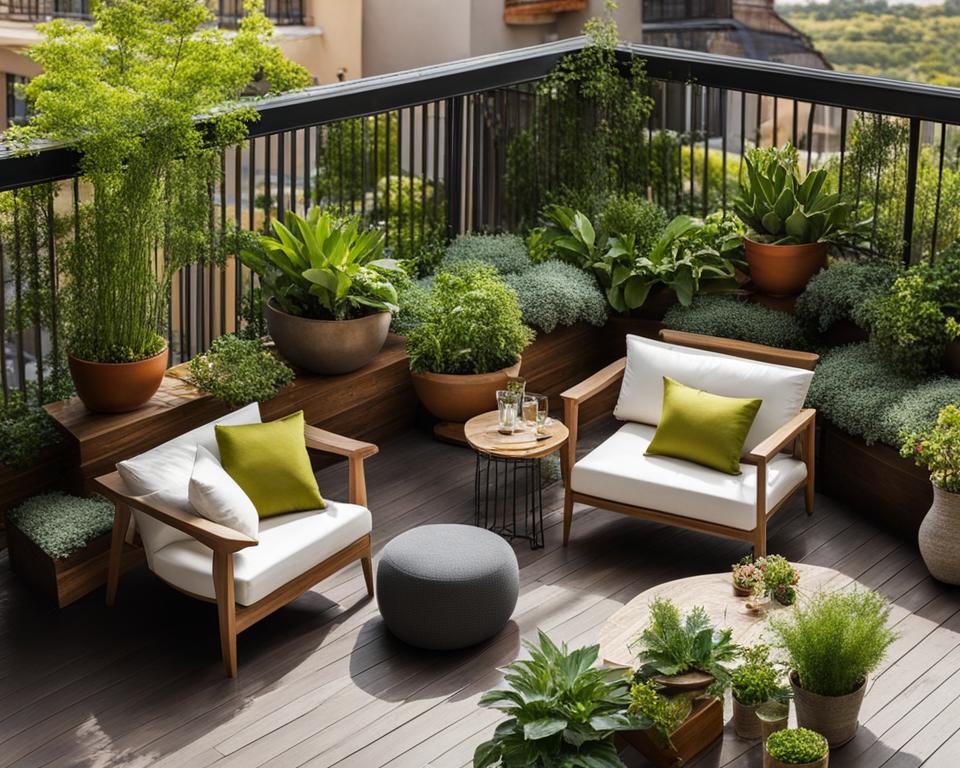
Transforming your balcony into a lush garden might seem challenging, but with a few strategic small space gardening tips, you can make the most of even the tiniest area. Learning the art of balcony garden design is at your fingertips, offering a rewarding way to engage with nature without the need for a spacious backyard. Imagine stepping out onto your balcony to a personal green retreat filled with your favorite plants, all thanks to a bit of creativity with container gardening ideas.
- Take advantage of vertical space utilizing hanging planters and tiered shelves.
- Choose containers that reflect the sunlight and complement your outdoor décor.
- Incorporate a variety of plants, from herbs and leafy greens to colorful blooms for visual interest.
One of the inherent advantages of balcony spaces is their exposure to sunlight, which many plants crave. However, it’s important to consider the weight your balcony can support. Opt for lightweight materials and ensure proper water drainage to prevent any damage to your space. Below you’ll find a table that compares several suitable plants for your balcony garden, their preferred lighting conditions, and how to best utilize them within your limited space.
| Plant | Light Needs | Container Suggestion | Additional Tips |
|---|---|---|---|
| Tomatoes | Full sun | Deep pots with support cages | Early watering to prevent blossom-end rot |
| Lettuce | Partial sun to full sun | Shallow containers or window boxes | Frequent harvesting encourages growth |
| Cucumbers | Full sun | Horizontal trellises in deep pots | Pruning allows better sunlight exposure and air circulation |
| Herbs (basil, mint, thyme) | Full sun to partial shade | Small pots or grouped in a larger planter | Regular pruning promotes a bushier plant |
| Flowering plants (petunias, marigolds) | Full sun | Hanging baskets or balcony railing planters | Deadheading spent blooms encourages more flowers |
Remember, the key to successful small space gardening is to balance practicality with aesthetics. Even in the most compact spaces, there is room for beauty and bounty. With the right approach, your balcony or small space can not only thrive but become a cornerstone of your daily joy and relaxation. Embrace the challenge and watch as your high-rise haven comes to life.
Embracing Container Gardening in Urban Areas
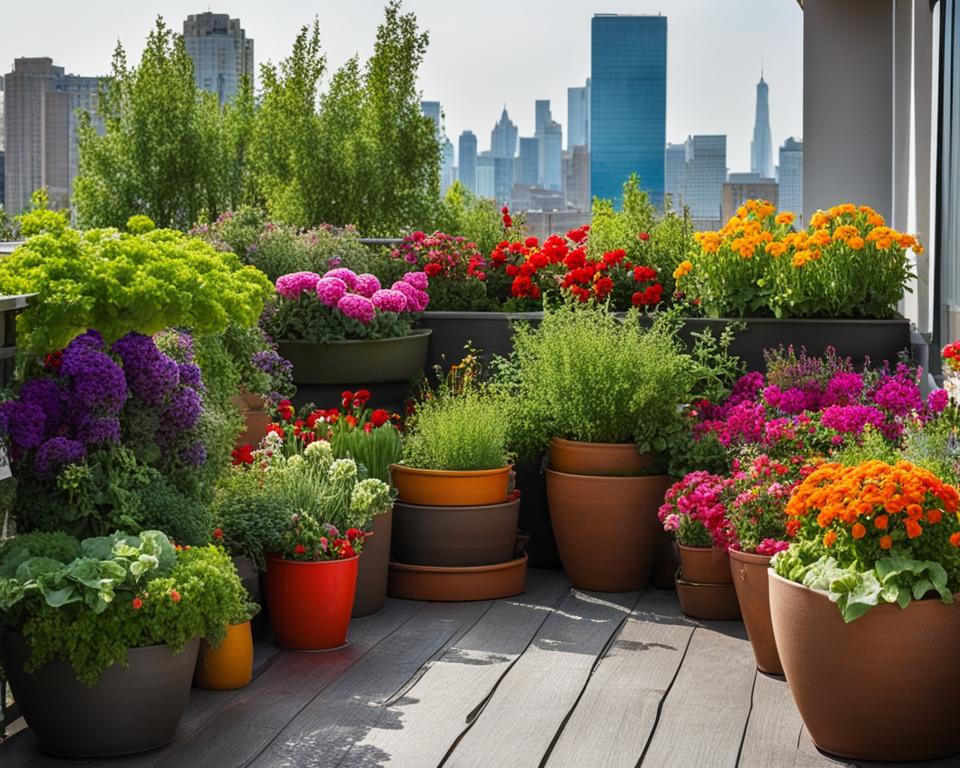
Discover the endless possibilities of container gardening ideas within your urban setting, where patios, balconies, and rooftops can transform into bountiful green spaces. With the right approach, your pocket gardens can thrive and provide a refreshing touch of nature right outside your window. Let’s delve into the essentials of selecting and managing containers to maximize your gardening potential even in the smallest of spaces.
Container Selection for Optimal Growth
Choosing the right container is not just about aesthetics—it’s about the health of your plants. Containers that provide adequate space for roots to grow and ensure proper drainage are critical for optimizing plant health and yield. Think beyond traditional pots; consider repurposed items like old buckets or wooden crates, which can be an eco-friendly and creative addition to your garden. Remember, the material of your containers will also affect the soil temperature and moisture, so choose wisely to ensure your plants get ideal growing conditions.
Utilizing Vertical Space with Hanging Containers
Vertical gardening techniques are a godsend for urban gardeners. Make the most of your air space with hanging containers, which not only save on square footage but also add an eye-catching element to your urban oasis. Utilize devices like pulleys for easy watering and maintenance, and get creative with materials—macramé can be both functional and decorative for your hanging gardens. This innovative approach can turn a bare wall or balcony railing into a lush, vertical tapestry of greenery.
Water Management in Limited Space Gardening
Water is life, especially in a container garden where the soil can dry out faster than in the ground. Establish a consistent watering routine to keep your plants thriving. Incorporate self-watering containers or a drip irrigation system to manage your garden’s hydration needs efficiently. Containers with saucers are excellent for protecting your outdoor surfaces and conserving water, but be careful of overwatering, which can lead to root rot.
The beauty of container gardening lies in its flexibility and adaptability—perfect qualities for an urban gardener like you. With these tips and your creative spirit, even the coziest of city balconies can blossom into a verdant, edible, or floral showcase that brings solace and satisfaction. Start your container garden today and join the vibrant community of urban green thumbs!
Innovative Vertical Gardening Techniques
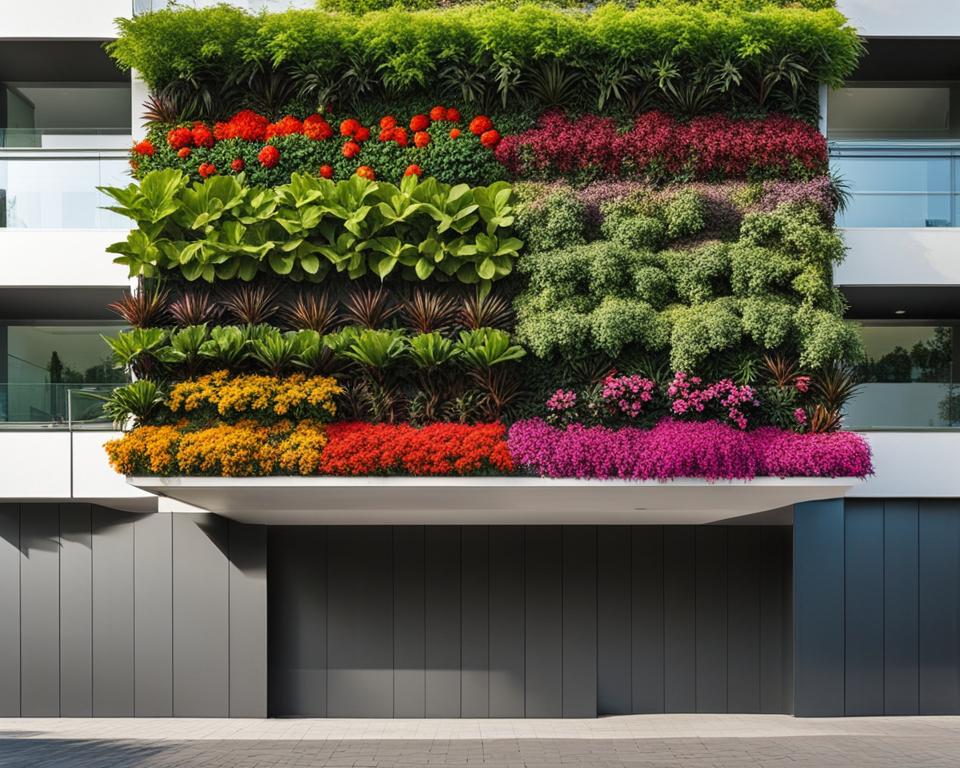
Discover the potential of vertical gardening techniques, transforming the way you think about green spaces in your urban dwelling. With small space gardening tips, these innovative approaches allow you to cultivate a variety of plants, herbs, and even vegetables without the need for expansive ground surfaces. Vertical gardens are not only a practical solution for urban gardening ideas, but also add an enchanting vertical appeal to your personal concrete jungle.
Whether you’re looking to enhance an outdoor patio or brighten up an indoor area, vertical gardens offer versatility and style. By employing standing shelves or leaning on readily-available vertical garden kits, you create dynamic layers of greenery that rise above the typical potted plant arrangement. Here are a few vertical gardening strategies that you can incorporate into your space:
- Attach planters to wall spaces or balcony railings using secure brackets or magnetic systems.
- Purchase or DIY vertical garden kits that include all the components you need for a foolproof vertical planting experience.
- Use bookcases or standing shelves lined with plants for an easy-to-assemble living wall.
- Custom-build trellises and climbing structures for vine-based plants, which can serve as both artistic pieces and functional growing supports.
One of the main advantages of vertical gardening is the efficient use of limited space. Even the smallest balcony or terrace can become a lush oasis with the right setup. Here’s a quick guide to help you optimize your vertical gardening endeavor:
| Element | Consideration | Tip |
|---|---|---|
| Plant Selection | Choose plants based on sunlight, water needs, and growth habits. | Select a mix of trailing and upright plants to create depth and variety in texture. |
| Structural Integrity | Ensure your walls and railings can support the weight of the garden. | Invest in lightweight containers and substrates to minimize strain. |
| Watering System | Vertical gardens may require more frequent watering. | Consider a drip irrigation system for even, consistent watering. |
| Aesthetics | Plan the layout for both beauty and plant health. | Arrange plants for a mix of heights, colors, and textures to create visual interest. |
By implementing these vertical gardening techniques, even the most compact urban apartment can nurture a flourishing garden that provides fresh air, relaxation, and a touch of nature in the heart of the city. Get creative with your space and cultivate upward for a breathtaking and space-savvy garden that rises to new heights.
Creative Indoor Gardening Hacks for Urban Dwellers
Embrace the art of bringing the outside in with clever indoor gardening hacks. For those living in the heart of bustling cities or in modestly sized apartments, crafting an urban oasis design is not just a dream. Let these ingenious strategies empower you to build your lush indoor sanctuary, regardless of space limitations. Whether you’re nurturing herbs in the kitchen or generating a tropical vibe in your living room, the small space gardening tips below can turn your place into a verdant retreat.
DIY Mini Greenhouses for Small Spaces
Create a micro-climate in your abode with a DIY mini greenhouse. These charming structures can fit on a windowsill or occupy a corner in your living area, offering a year-round haven for your plants. With the right materials—like transparent plastic or glass—you can control the temperature and humidity to suit the needs of specific plant species. Herbs, succulents, and exotic plants will thrive under such care, making them an ideal choice for your indoor gardening project.
Maximizing Sunlight and Greenery Indoors
Take advantage of natural light to illuminate and invigorate your indoor garden. Optimal placement near windows can transform your herbs and flowers, providing them with the energy they need to grow. Reflective surfaces such as mirrors can also bounce light around darker rooms, enhancing the available light for your plants. For rooms with limited sunlight, consider LED grow lights as an efficient alternative to keep your urban oasis vibrant and healthy.
Elevated Indoor Planters for Aesthetic and Space
Elevate your greenery with stylish indoor planters that save space and add a touch of elegance. Using shelving units, wall-mounted pots, or suspended containers, you can create dynamic levels and displays of foliage. These elevated planters not only serve as a decorative feature but also keep your plants out of reach from pets and small children, ensuring their safety and longevity. Introducing varied heights and layers in your indoor garden is not only aesthetically pleasing but also maximizes space efficiency.
Remember, regardless of how small your quarters may be, with these indoor gardening hacks, creating a flourishing urban oasis is within your grasp. Dive into the world of indoor gardening and enjoy the serenity and satisfaction it brings into your life.
Edible Landscaping: Growing Food in Urban Settings
Transitioning into an urban agriculturist is steadily becoming a renowned journey for many in cityscapes. Mastering edible landscaping ideas begins with a strategic approach to integrating edible plants into your urban garden design. Whether you’re initiated into urban gardening for beginners or seeking to enhance your current greenspace, let’s cultivate the skills to grow a lush, edible oasis amidst the hustle and bustle of city life.
Designing Your Edible Layout
Begin by auditing the space at your disposal—every nook and cranny holds potential. Consider the sunlight exposure, the quality of your soil, and water availability when conceptualizing your layout. Raised beds can nurture root development for vegetables, and trellises grant vining plants like tomatoes or peas the support they need, making the most of vertical space. Use pathways to invite movement and access for maintenance in your garden, creating practical yet aesthetically pleasing designs.
Choosing Plants for Urban Edibility
Selection of crops plays a pivotal role in the success of your edible landscape. Opt for varieties that relish the urban environment’s uniqueness—leafy greens, herbs, and compact vegetables such as bell peppers and eggplants. The diversity of these plant choices not only paints a vibrant palette but also treads lightly on the ecosystem, enriching biodiversity.
Sustainable Practices in Urban Agriculture
Building a sustainable urban garden resonates with a harmonious natural symphony. Employ practices like composting kitchen scraps to enrich your soil, harvest rainwater to quench your greens, and invite beneficial insects to keep pest populations in check. Your edible haven becomes an emblem of ecological stewardship.
| Plant | Light Requirements | Soil Type | Water Needs | Space Utilization |
|---|---|---|---|---|
| Tomatoes | Full Sun | Rich, loamy | Consistent moisture | Vertical space for climbers |
| Basil | Full Sun to Partial Shade | Well-draining | Keep soil moist | Compact; suitable for borders or window boxes |
| Strawberries | Full Sun | Slightly acidic | Regular watering | Ground cover or in hanging baskets |
| Spinach | Partial Shade | Loose, nitrogen-rich | Evenly moist soil | Edge plantings or intercropping |
| Peppers | Full Sun | Well-drained, fertile | Keep evenly moist | Can be grown in pots or raised beds |
As you embark or continue on this green journey, let the urban landscape be a canvas for your edible aspirations. Remember, each plant you nurture not only feeds the body but also revitalizes the soul and the city.
Small Space Gardening Tips with Container Innovation
Maximizing your home’s potential for greenery starts with small space gardening tips. One of the pinnacle methods for urban dwellers is container gardening ideas, which are not only practical but also allow for an extraordinary range of plant variety. Whether you’re looking to spruce up a balcony, a windowsill, or even a tiny corner of your room, innovative container choices can make a world of difference.
Exploring urban gardening ideas, there’s a wealth of options for repurposing everyday items into plant containers. Think of that worn-out boot, an old drawer, or rustic buckets – they can serve as charming homes for your plants, adding character as well as greenery to your urban space. The key? Ensure that there’s proper drainage and that the size of the container complements the growth habits of the plant it houses.
- Choose containers that fit your space aesthetically and efficiently.
- Invest in quality soil to provide your plants with the nutrients they need.
- Carefully consider the water needs of each plant – too much or too little can be damaging.
- Make use of railing planters to take advantage of vertical space.
By integrating container gardening ideas into your lifestyle, you’ll find that even the smallest spaces can be transformed into flourishing gardens. Remember, the essence of successful small space gardening tips lies in creativity and consistent care, allowing you to fully enjoy the splendor of nature’s beauty, no matter the size of your urban abode.
Rooftop Garden Inspiration for City Dwellers
Transforming your rooftop into a lush urban oasis design can introduce a slice of nature into your metropolitan lifestyle. Let’s explore how you can create a unique rooftop garden that not only maximizes your space but also offers a serene retreat amidst the concrete jungle.
Creating Multi-Level Garden Sanctuaries
Embrace the concept of multi-dimensional planting to give your rooftop garden depth and structure. Utilize raised beds, terraced planters, and even vertical gardens to craft a multi-level experience that engages the senses. This layout not only amplifies the beauty of your space but also provides small space gardening tips on how to grow more in less area.
Selecting Durable and Stylish Furniture for Rooftops
Invest in furniture that withstands the elements while enhancing the aesthetics of your garden. From sleek, minimalist pieces to rustic, wooden accents, the right furniture can serve as both a practical spot for relaxation and a complement to your blooms and greenery.
| Material | Benefits | Considerations |
|---|---|---|
| Teak Wood | Natural weather resistance, Longevity | Requires periodic oiling to maintain finish |
| HDPE Lumber | Eco-friendly, Low maintenance | May have a higher initial investment cost |
| Wrought Iron | Durability, Classic look | Can be heavy, might need cushions for comfort |
| Aluminum | Lightweight, Rustproof | Can get hot under direct sunlight |
Incorporating Water Features for Ambiance
Create a tranquil environment with the addition of water features. Whether it’s a small fountain, a birdbath, or a full-blown water wall, the sound of trickling water can transform your rooftop into a calming sanctuary, the ultimate in rooftop garden inspiration.
By integrating these elements into your rooftop space, not only are you stepping into a verdant retreat, you’re also contributing to the biodiversity and environmental health of your urban area. It’s time to roll up your sleeves and turn that roof into a blossoming, vibrant garden that offers respite and joy in your urban home.
Balcony Garden Design: A Personal Touch to Urban Living
Breathe life into the heart of your city abode with a well-designed balcony garden. It’s more than just arranging plants; it’s about crafting an outdoor sanctuary where you can unwind, entertain, and bask in the beauty of nature. Before you begin, here are a few principles to consider for creating that picture-perfect balcony space you’ve always desired.
Choosing Decor and Plants for Balcony Aesthetics
Fostering a lush retreat starts with selecting plants and decor that reflect your style and thrive in your balcony’s conditions. Start with assessing the amount of sunlight and wind your balcony receives and pick plants suited to these elements. When it comes to decor, consider pieces that can double up as planters or garden accessories to save on space. Think about how you want your balcony to function – as a place for calm reflection or lively social gatherings, and let your choices in decor echo your intentions.
Privacy and Comfort in Your Balcony Retreat
Urban living often comes with close quarters and the feeling of being overlooked can detract from your serene garden space. Cultivate your own private nook with trellises or plant screens that provide seclusion without blocking out precious sunlight. By choosing climbing plants or tall potted greenery, you can construct an organic curtain to envelop you in privacy and tranquility.
Integrating Art and Color in Balcony Gardens
Your balcony is an extension of your living space and it should showcase your personality. Integrate vibrant art pieces or colorful containers that steal the spotlight in your urban oasis. Whether it’s a striking wall mural or a collection of eclectic pots, let your creative spirit take the lead. Embracing a dash of color amidst the greenery can enliven your balcony garden, making it a delightful spectacle.
| Category | Characteristics | Examples |
|---|---|---|
| Plants for Sun | Thrives in direct sunlight, drought-tolerant | Geranium, Petunia, Lavender |
| Plants for Shade | Prefer limited or indirect light | Ferns, Begonias, Fuchsia |
| Decor for Function | Pieces that serve dual purposes | Planter benches, vertical wall planters |
| Artistic Flair | Pieces that add a pop of color and expression | Mosaic pots, decorative garden stakes |
With these small space gardening tips, the balcony garden design process becomes a joyous journey of self-expression. Let urban gardening ideas spring forth, intertwining aesthetics and functionality to realize your dream balcony retreat. Your sanctuary among the sky-scrapers awaits—a testament to cultivated elegance in the expanse of the city.
Conclusion
As we’ve explored the myriad of urban gardening ideas, it’s clear that bringing botanical beauty into city living is not just feasible but immensely fulfilling. Whether you’re delving into urban gardening for beginners or seeking to refine your established green space, the strategies discussed present a multitude of options to suit your lifestyle and area constraints. From the camaraderie fostered in neighborhood plots to the peaceful solitude available amongst rooftop plantings, these practices enrich urban environments with verdant life.
For those of you working within tighter boundaries, small space gardening tips are invaluable, allowing you to maximize every square inch of your outdoor—or even indoor—areas. The creativity displayed in container gardening, vertical installations, and balcony designs not only solves space dilemmas but also transforms your residence into an eco-friendly retreat, brimming with green vitality. These solutions empower you to embrace the latest in urban gardening, no matter the size of your canvas.
In summary, urban gardening is not merely a hobby; it is a vibrant, resilient expression of nature that enhances the quality of city living. Offering a plethora of benefits that range from aesthetic upliftment to the joy of growing your own fresh produce, these urban gardening ideas stand testament to the remarkable adaptability and ingenuity of urban dwelling green thumbs. So, roll up your sleeves and let your urban oasis blossom in the heart of the concrete jungle.
FAQ
How can I get started with urban gardening in a small space?
Begin by assessing the space you have available, whether it’s a balcony, patio, or windowsill. Choose compact, container-friendly plants, and consider vertical gardening techniques to maximize your area. Make sure to research plant needs in terms of light, water, and space.
What are some creative ways to design a community garden?
For community gardens, consider planting beds that can be easily accessed and managed by multiple people. Incorporate communal areas such as benches or a pergola for socializing, and create a variety of plots for different types of plants, including sections for edible landscaping.
What do I need to know before starting a rooftop garden?
Check with your landlord or building management about any restrictions or guidelines for rooftop gardening. Look into lightweight planting solutions to manage weight restrictions and be mindful of the unique weather conditions—such as wind and sun exposure—when selecting plants and designing your garden space.
Are there specific plants that thrive in balcony gardens?
Absolutely! Many herbs, such as basil and mint, vegetables like tomatoes and peppers, and flowers such as petunias and geraniums are well-suited for balcony gardens. The key is to select plants according to the amount of sunlight your balcony receives and the local climate.
What are some benefits of container gardening in urban environments?
Container gardening allows for flexibility in the arrangement of plants, mobility if you need to move plants around for better sun exposure, and the ability to grow a variety of plants in a limited space. Containers also help in containing plant diseases and can be a decorative element in your garden design.
Can you provide tips for successful vertical gardening?
When engaging in vertical gardening, choose plants that are naturally climbing or can be easily trained to grow upwards. Utilize structures like trellises, wall-mounted planters, or even upcycled items like pallets. Ensure that each plant gets enough sunlight and air circulation to prevent disease.
How can I incorporate indoor gardening into my apartment?
You can create an indoor garden by using potted plants, hanging baskets, or window boxes. Choose plants that can thrive indoors, like snake plants, pothos, or herbs. Make sure they have access to adequate light and are potted in containers with good drainage.
What are the keys to designing an edible landscape?
Start by selecting a variety of plants that provide both beauty and food, such as fruit-bearing shrubs, herbs, and vegetables. Plan your garden so that it is easily accessible for harvesting and maintenance. Also consider companion planting for natural pest control and pollination.
What should I consider when choosing furniture for my rooftop garden?
Select furniture that can withstand outdoor conditions, particularly if your rooftop garden is exposed to the elements. Choose items that complement the style of your garden and are comfortable for lounging or dining. If possible, go for pieces that are multifunctional or can be easily stored when not in use.
How can I create a sense of privacy on my balcony garden?
Utilize tall plants like bamboo or grasses to act as a natural screen, or install trellis panels with climbing vines. Consider privacy screens, hanging textiles, or parasols that can provide shade and seclusion while still allowing natural light and airflow.
How do I incorporate art into my balcony or garden design?
Art can be integrated into your garden design through the use of decorative pots, themed sculptures, colorful wall murals, or even functional items like artistically designed birdhouses or wind chimes. Choose pieces that resonate with your personal style and enhance the overall ambiance of your garden space.
What are some essential tips for urban gardening beginners?
Start small and choose easy-to-grow plants to gain confidence. Research the specific needs of your urban environment, like sunlight and wind patterns. Invest in good quality soil and fertilizers, and be diligent about regular watering and maintenance. Connect with local gardening communities for support and advice.

